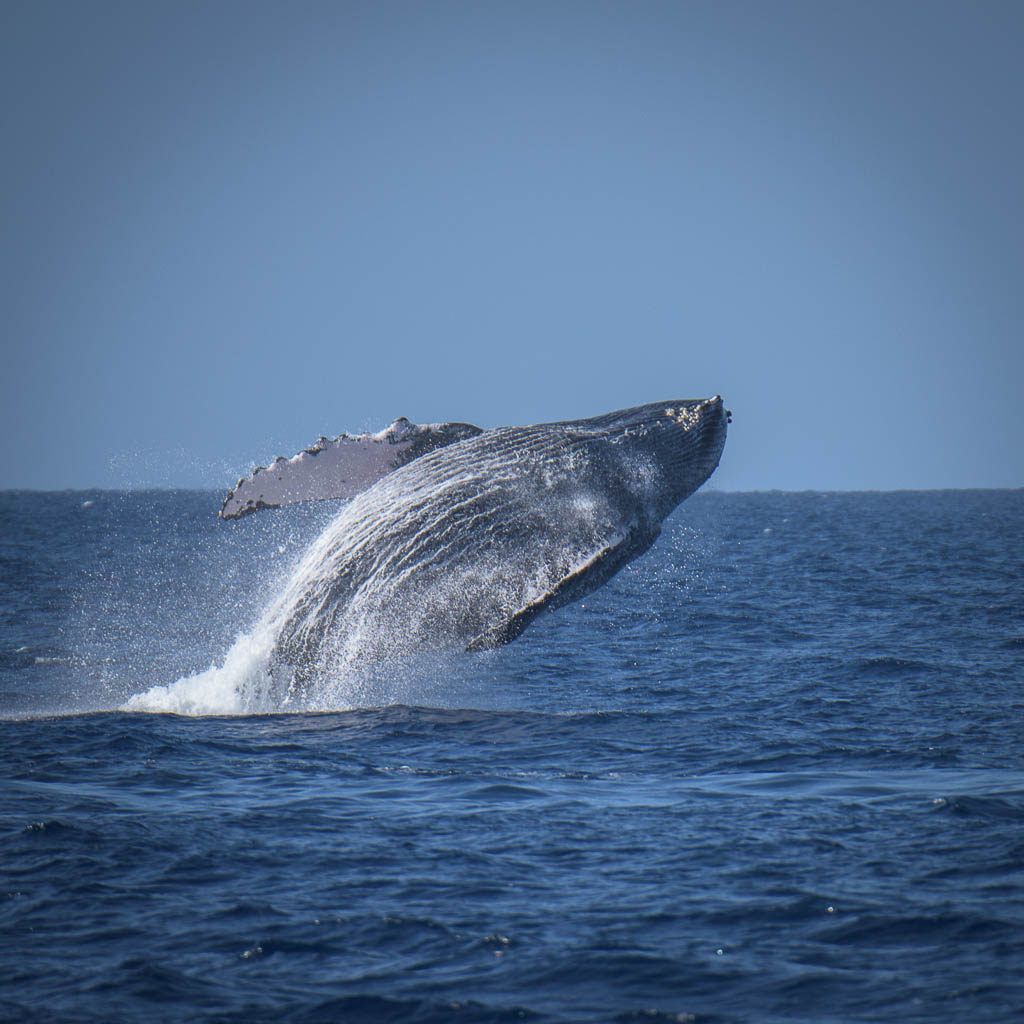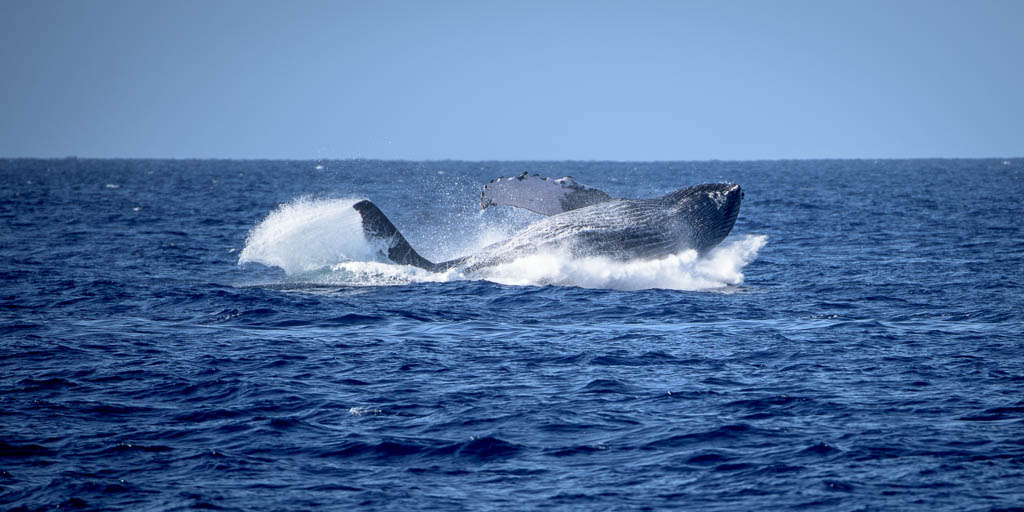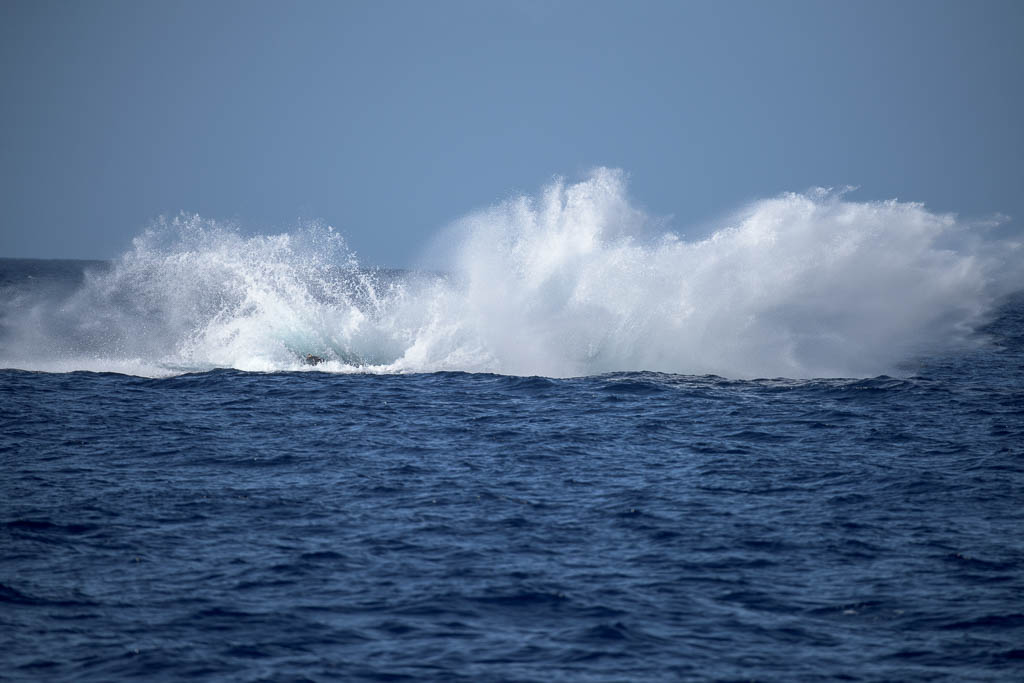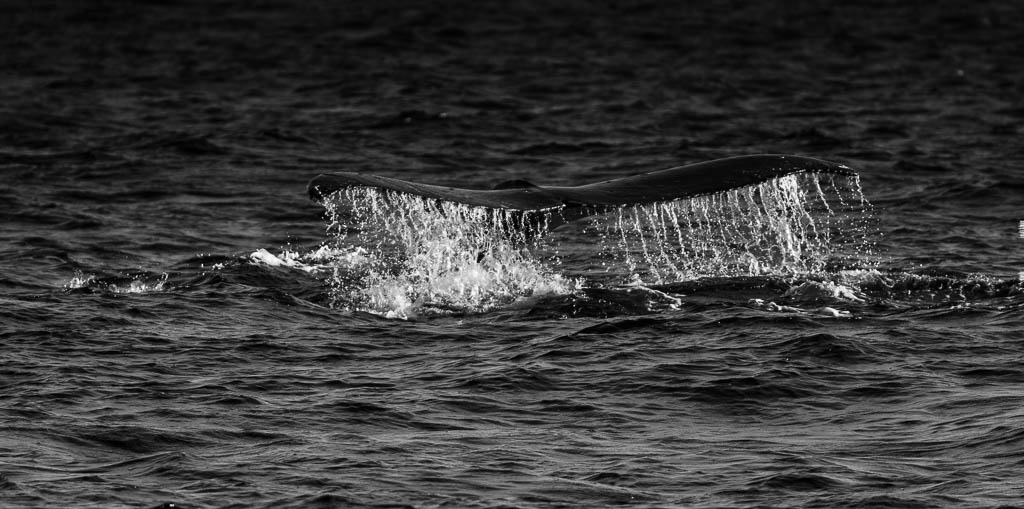
How To Photograph Whales
In my last week on Maui each year, I try to blog about one of my favorite animals, humpback whales. These 45-ton behemoths are truly gentle giants, traveling 2,500 long miles from Alaska to the warm, relatively shallow waters off Maui.
The humpbacks come here to mate and to calve and at any one time there are approximately 1,200 humpbacks to be seen. From a mere 500 humpbacks 30 years ago, our conservation efforts now post some 25,000 healthy specimens in this North Pacific group. This goes to prove that we can effect positive environmental change when we put our collective minds to it.
And what a sight it is to see these whales cavorting, breaching, fin slapping, tail lobbing, spy hopping and competing for the amorous attention of males and females. Miraculously, they do not eat at all while in Hawaii, losing up to 30% of their body weight.
Every week while in Maui in February, I take at least one whale watching cruise. I use the Pacific Whale Foundation’s wonderful boats and informed naturalists, since they pour their earnings into solid research, education and advocacy.
My first couple of cruises this month were nothing special, photography-wise, with some good shots, but nothing really special. My third trip did result in some interesting images. On my final sail yesterday, we didn’t see one whale for the first hour. This has never happened to me before. It was rainy and windy the previous day, so perhaps the whales were waiting for the water to warm. But then, in the last hour of the cruise, the waters came to life. Whales began to appear, with lots of tail lobbing and fin slapping. Finally, we were treated to several breaches.
No one knows for sure why whales breach. It could be a mating thing, since humpbacks do not breach nearly as much in Alaska. It could be to dislodge some of their barnacle load, which can sometimes add up to 2,000 pounds to their bulk. Or it may be some primitive urge to fly (just kidding). Whatever the reason, this amazing demonstration of their power, heaving 45 tons out of the ocean, is the best definition I know of “awesome.”
Breaches happen so fast, you hardly have time to prepare for it with your camera. The water is flat and calm and suddenly a leviathan erupts from the water with no warning. Everyone on board oohs and aahs. Kids scream in delight. Then the beast falls back in the water with a thunderous, unforgettable sound.

Humpback landing
The resultant splash can be seen for miles. Typically one breach may signal more to come, whether by the same whale or by competitors. Both males and females may breach.

Preparing to Photograph Whales
So, how do I prepare for a whale shoot? The secret is really shutter speed. I usually take only one camera. In this case it was my trusty Nikon D810. This year I bought the new version Nikkor 80-400mm lens. The 80-400 is lighter and allows me to substitute it for my 200-400 and 70-200. Moose Peterson recommended it and I agree with his appraisal that it is a sharp, fast lens. Of course I wish it went to f4.0, but no lens is perfect.
In any case, I typically start the trip with my ISO at 800 and the shutter release set to its fastest rate. I keep my f-stop at its shallowest, in this case f5.3. Of course, you do not want any filters on your lens.
I try for a shutter speed of at least 1/2000 second to freeze the whales in action. Now, here is a technique that I use pretty effectively to capture things like breaches. First, I zoom back to around 200-300mm, so I have a wider field of view, with my hand under the barrel, ready to zoom in as soon as I spot action. Thankfully, the 80-400 is a fast lens and acquires focus very quickly. I set focus to Continuous and Group mode.
I like to shoot in Manual mode most of the time, but I will occasionally shoot in Aperture priority. In either case, I like to add 1/3 to 2/3 stops of exposure to pick up details in the whales. I’m not that concerned of the water or sky is a bit overexposed. I can always fix that in post.
Another tip is that I keep both eyes open as I scan the area where I last saw action. Whales, of course, do not give a hoot about placement. When they dive they can come up anywhere. So I like to scan a small section of ocean. If I pick up anything I’ll close my non-shooting eye and begin to fire
One final tip; don’t get discouraged. Photographing active whales from a moving, bobbing boat isn’t easy. At first a 10% hit rate would be good.

But, never mind the technical stuff. What is most wonderful to me is that we can observe these intelligent beings without slaughtering them. And how fortunate for us photographers.